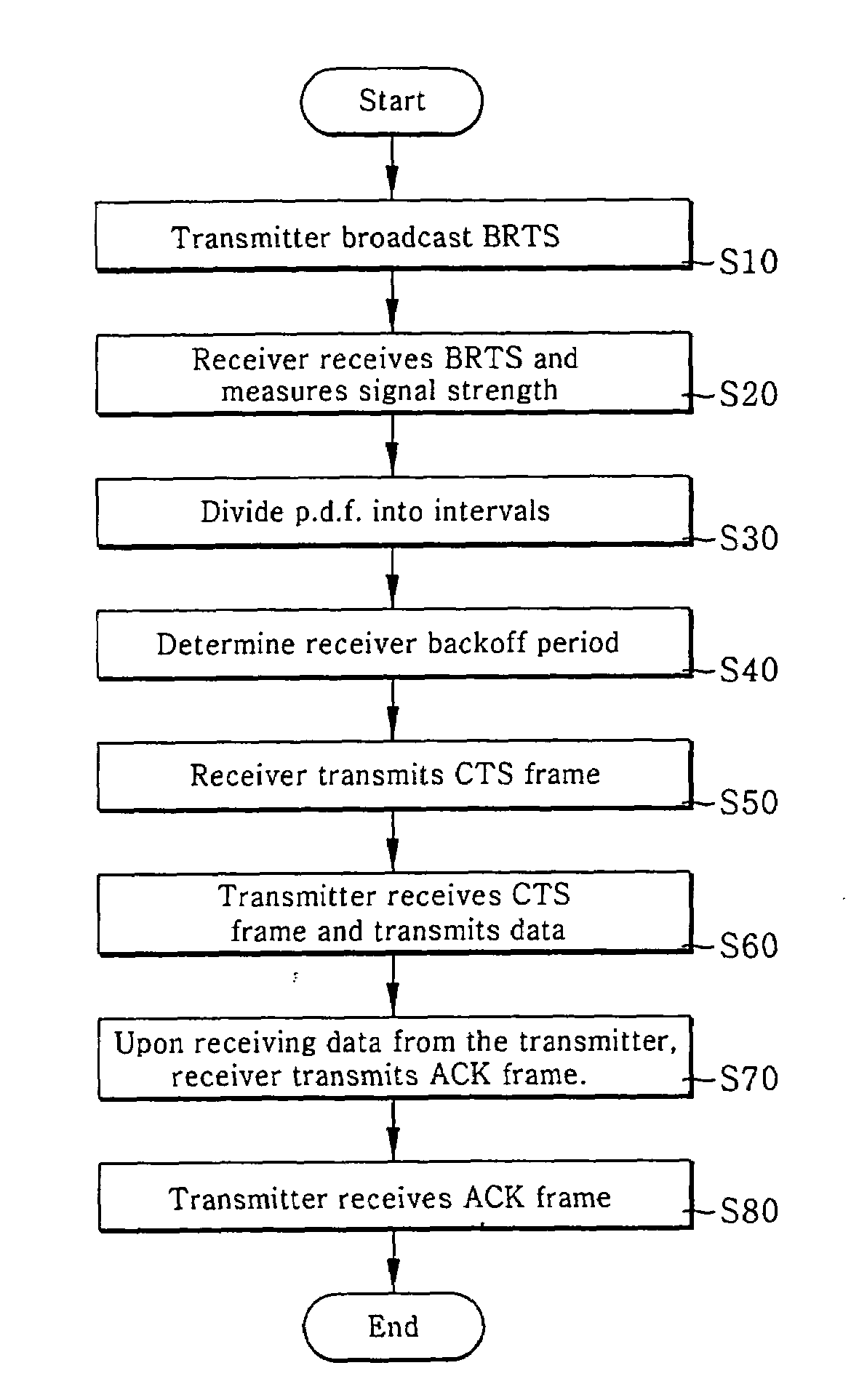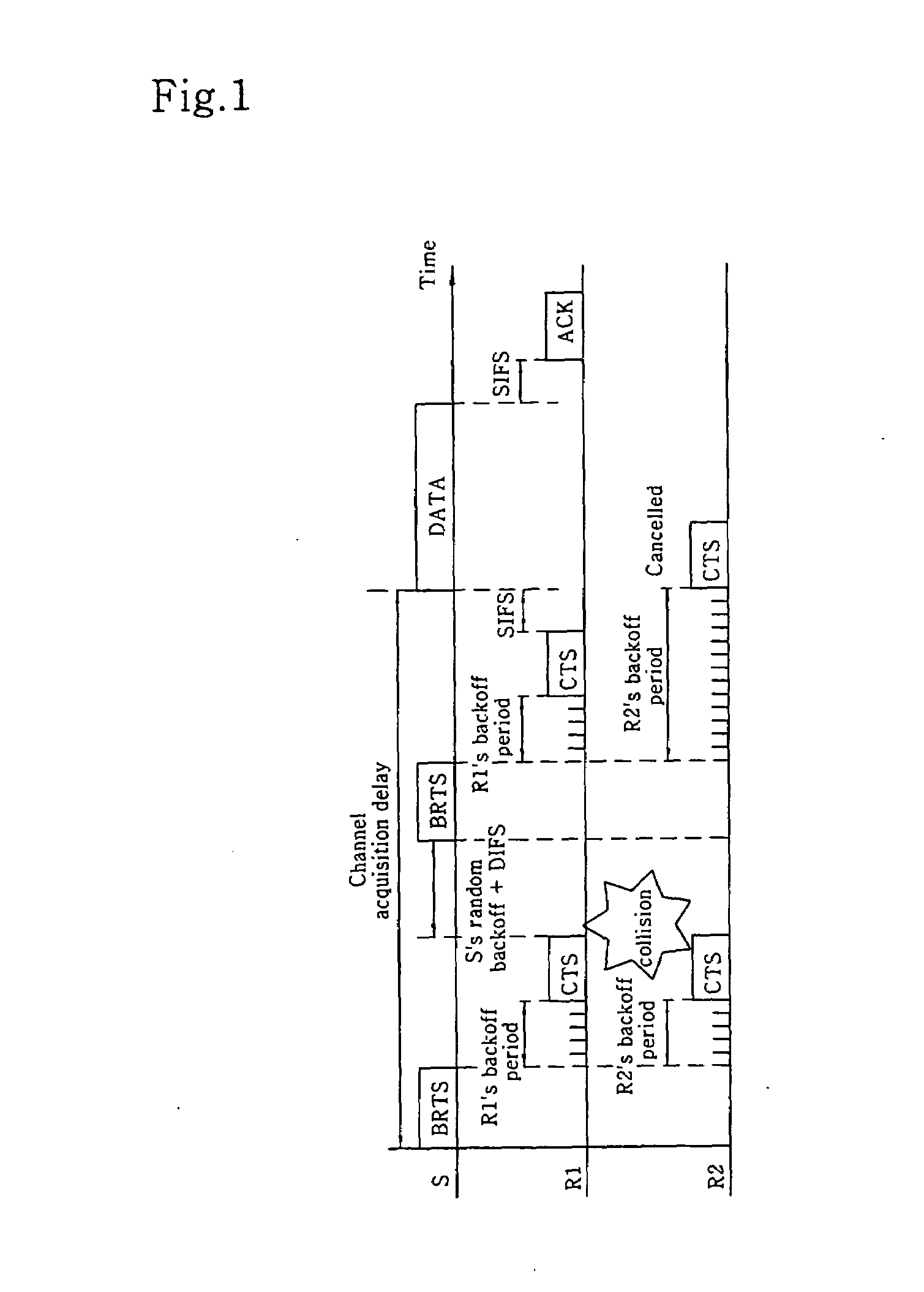Distributed opportunistic scheduling in IEEE 802.11 wireless location area networks (WLANs)
a wireless local area network and multi-user technology, applied in the field of distributed/opportunistic scheduling methods for acquiring multi-user diversity gains in wireless local area networks, can solve the problems of complex ieee 802.11 wlans that do not support a mechanism for collecting receiver channel information, signal become more vulnerable to interference or noise, and achieve maximum multi-user diversity gain, maintain the effect of probing overhead
- Summary
- Abstract
- Description
- Claims
- Application Information
AI Technical Summary
Benefits of technology
Problems solved by technology
Method used
Image
Examples
Embodiment Construction
[0052]Now, preferred embodiments of the present invention will be described in detail with reference to the annexed drawings. In the drawings, the same or similar elements are denoted by the same reference numerals even though they are depicted in different drawings. In the following description, a detailed description of known functions and configurations incorporated herein will be omitted when it may make the subject matter of the present invention rather unclear.
[0053]FIG. 1 is a conceptual diagram illustrating a channel probing process using a WLAN distributed / opportunistic scheduling (WDOS) method according to the present invention.
[0054]Referring to FIG. 1, a transmitter S firstly transmits a BRTS frame to probe channel states of two receivers R1 and R2.
[0055]In this case, the transmitter S may be indicative of an access point (AP) of a general WLAN system, or may also be indicative of any one of nodes of the same wireless terminal.
[0056]The receivers R1 and R2 determine thei...
PUM
 Login to View More
Login to View More Abstract
Description
Claims
Application Information
 Login to View More
Login to View More - R&D
- Intellectual Property
- Life Sciences
- Materials
- Tech Scout
- Unparalleled Data Quality
- Higher Quality Content
- 60% Fewer Hallucinations
Browse by: Latest US Patents, China's latest patents, Technical Efficacy Thesaurus, Application Domain, Technology Topic, Popular Technical Reports.
© 2025 PatSnap. All rights reserved.Legal|Privacy policy|Modern Slavery Act Transparency Statement|Sitemap|About US| Contact US: help@patsnap.com



